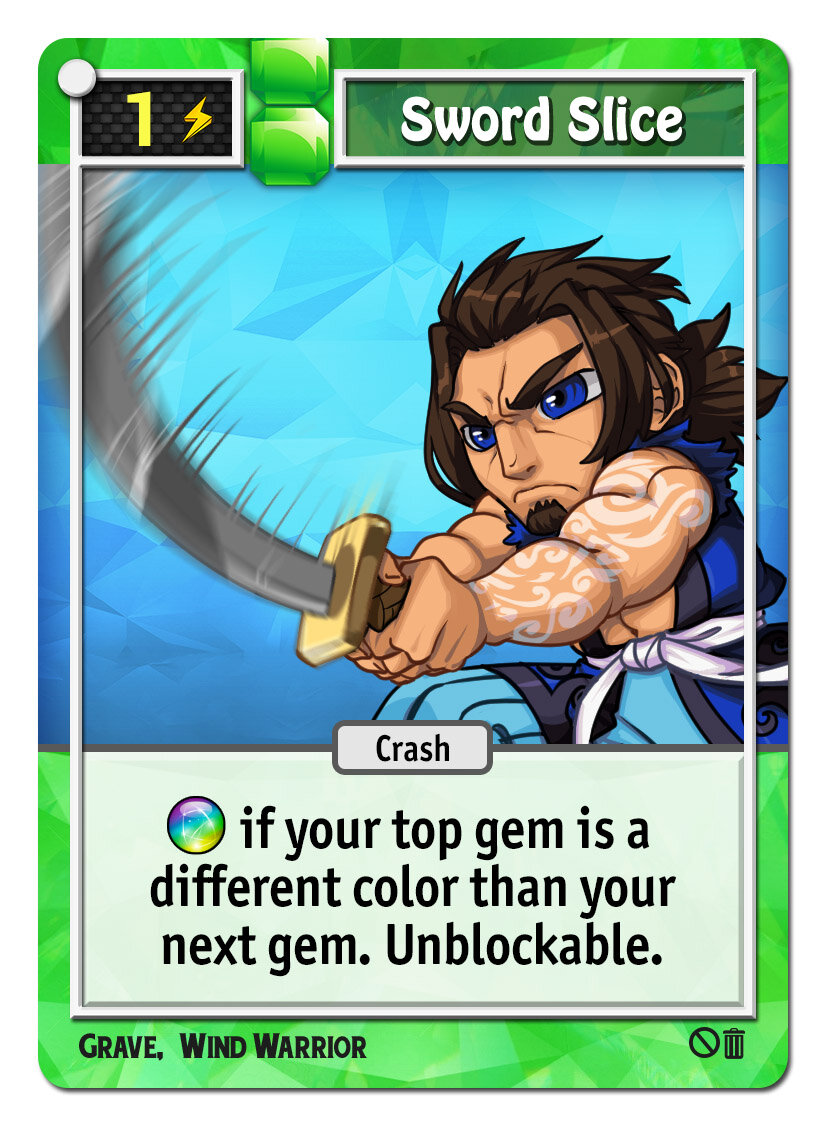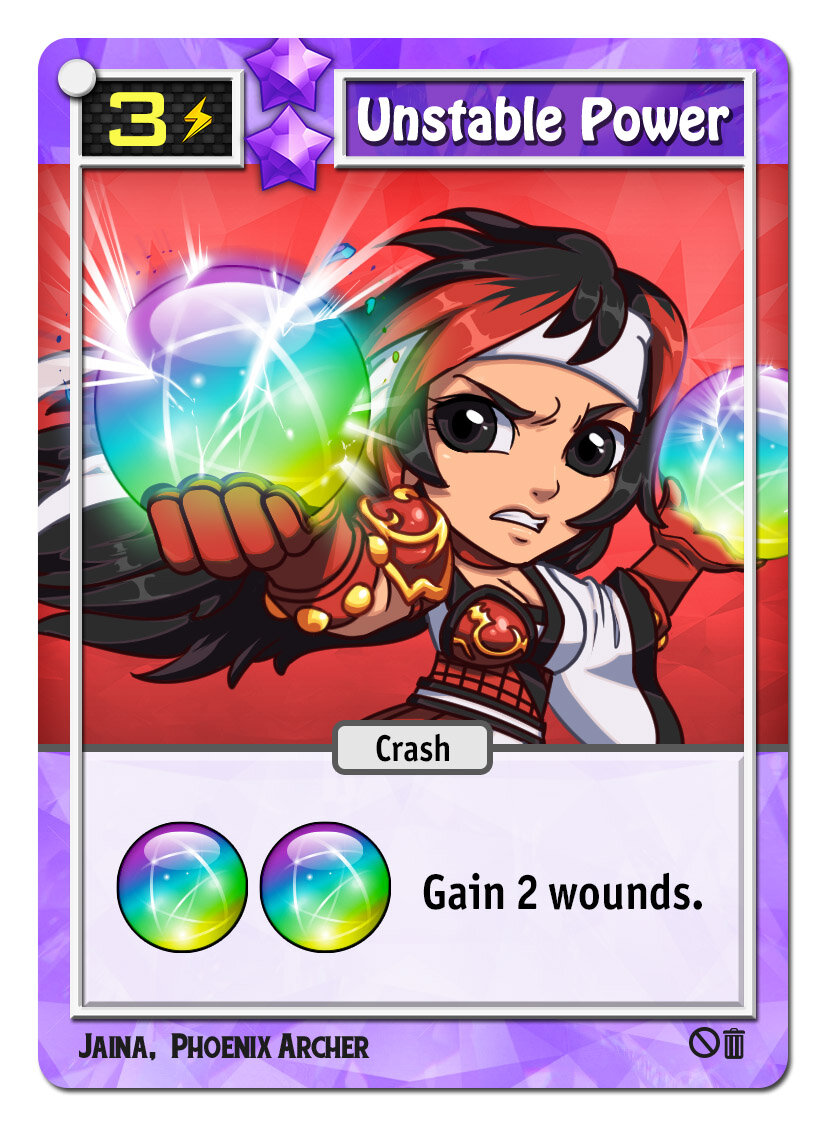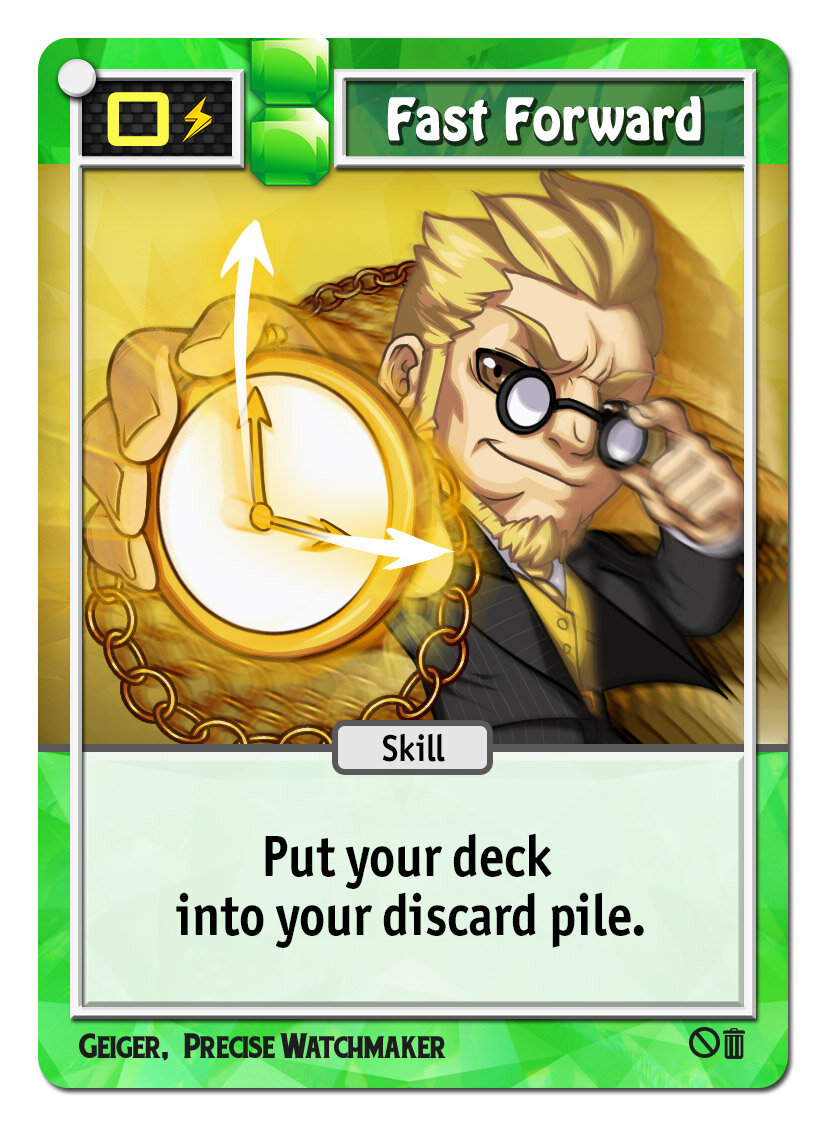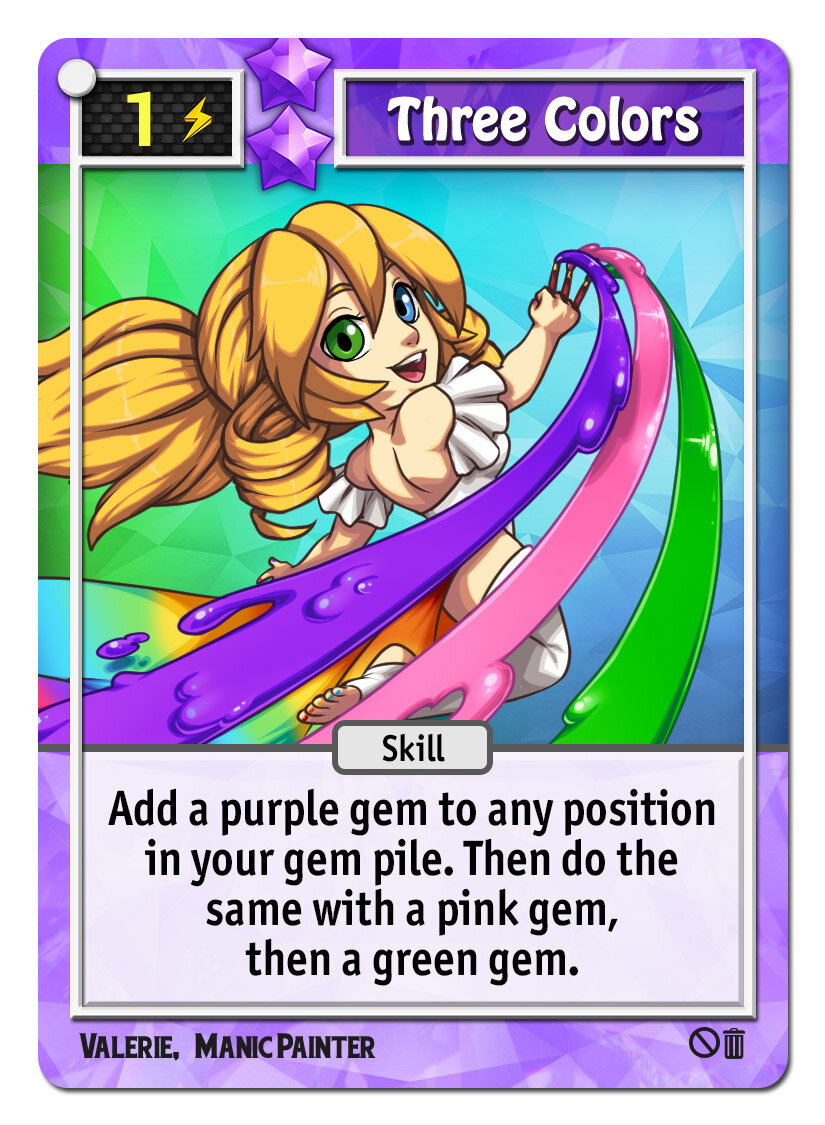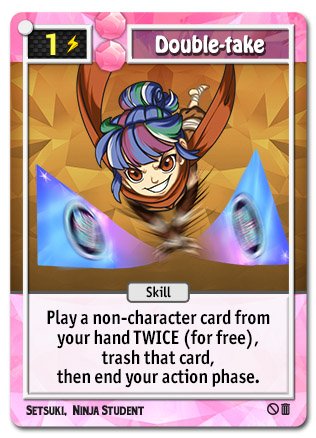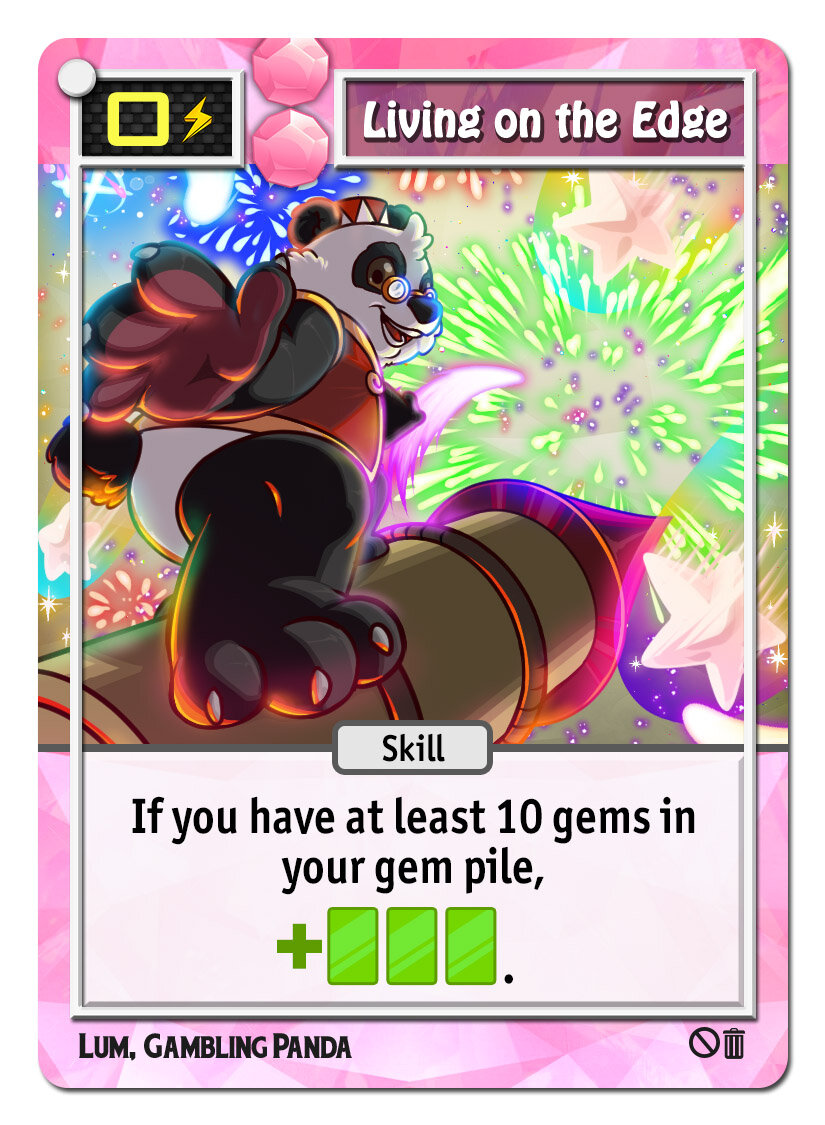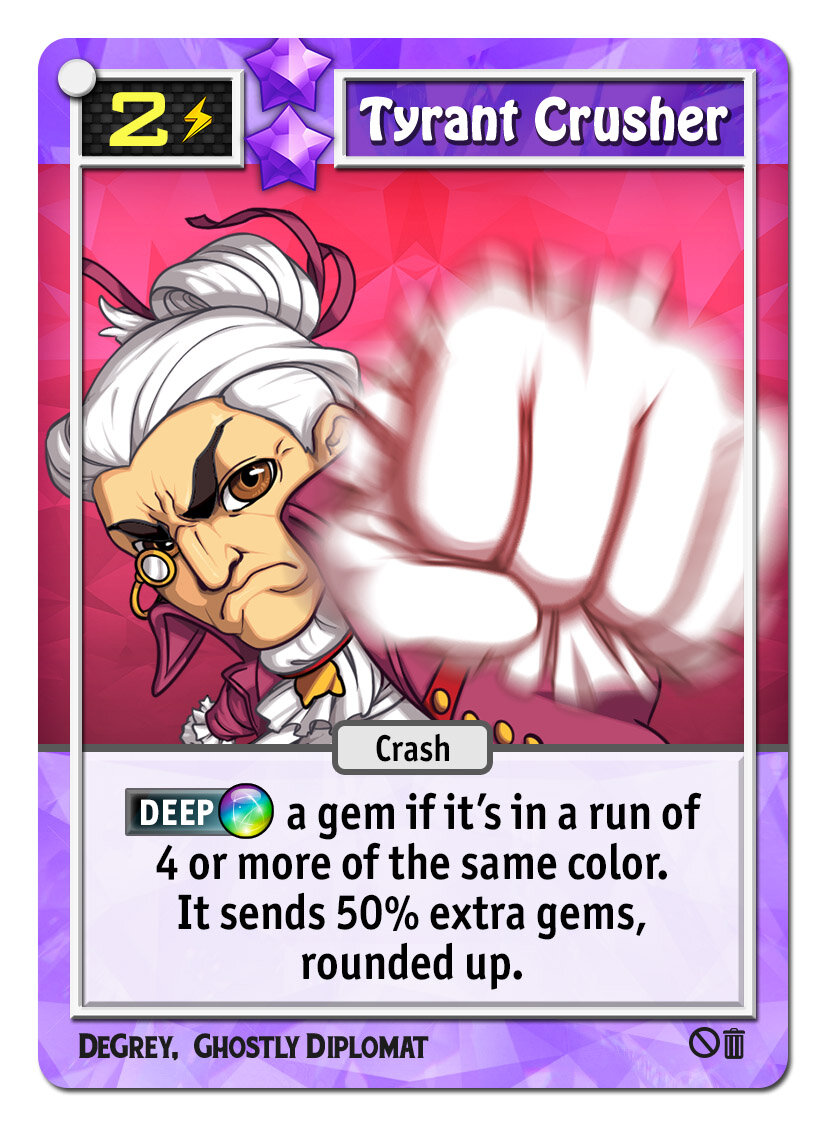Puzzle Strike 2’s base set comes with 10 characters to choose from. Each character has three cards and you start with those in your deck. Each character has different strengths, so they push you in different directions when building the rest of your deck.
To give you a taste of these characters, here’s just one card from each of them.
Grave, Wind Warrior
We’ll start with a “small” effect. This is a crash gem that only works if you haven’t lined up multiple colors on top of your deck. The power of this card is how often you end up using it. If your top gem doesn’t match the gems below it, you desperately want to get rid of that gem to get to the color-matches below. Sword Slice lets you get rid of your top gem for only 1 action in that case, while a normal crash gem would cost 2 actions. This cheap way of destroying “garbage” really adds up over time.
Jaina, Phoenix Archer
A double crash gem in your starting deck! Careful though, clogging up your deck with wounds will weaken your deck over time. That said, she has another card that feeds off her own wounds!
Geiger, Precise Watchmaker
This same effect appears in a few other card games and it’s usually weak. Not here though. The factors to keep in mind are that it’s free (0 actions!) and that you always have it in your deck if you’re Geiger. You don’t have to wait half the game to add it then later draw it. The effect means that Geiger can get back his “good stuff” (crashes if he needs that, or blocks if he needs those etc.) faster than usual because he can reshuffle his deck before having to draw the whole thing like other characters.
Argagarg, Water Shaman
This clogs up opponents’ decks with useless cards and it also actually kills them by adding gems to their gem pile if you keep playing this move over time. If the game goes long, this crushes them more and more so they better beat Argagarg soon.
Valerie, Manic Painter
This can be a risky move because it’s adding three gems to your own gem pile. But not that risky! Because you choose when to play this, or whether to play it at all. You can use it in situations where all it’s doing is boosting the size of crashes you were going to do anyway. Imagine if your top two gems are green and your next two gems are pink, and you also have a way of playing two crashes. Instead of crashing 2 + 2, this lets you crash 3 + 3. And doing so might make your gem pile tall enough that you get a bigger height bonus too. So in the right situation, this can really aid in rushdown strategies.
Setsuki, Ninja Student
A combo-maniac’s dream. There’s almost too many uses to name. Obvious ones are that if you need to crash twice or block twice or play twice as many swaps, this is your ticket. The tension here is that the things you most want to do twice are also the things you’re probably the most sad about trashing from your deck. This plays into her rushdown nature though. Try to double-take strong stuff right as you’re about to win so you can seal the deal. Hopefully there will not be a “later” to be sad about the cards you trashed.
Rook, Stone Golem
This is similar in nature to Valerie’s Three Colors, but it’s easier to use. Whatever run of gems you have on top of your gem pile can be 1 bigger, and it helps your next crash be that much stronger. Interestingly, another of Rook’s cards lets him destroy his top gem, which helps him do even bigger attacks if there’s a same-color run under that for him to play Big Rocks on.
Midori, Mentor Dragon
Having to ante an extra gem is a drawback of sorts, because it’s filling up your gem pile more. In practice though, it’s almost always a huge benefit. In general, you ante two gems of the same color on top of your gem pile (or 3 or 4 if there are any “ante ups” in effect). The point is, a single crash gem can crash all your ante gems. Dragon Form makes that even bigger because it’s adding yet another gem of the same color as all your other antes. And that they are unblockable is super strong. Your opponent will have to use expensive crash gems rather than cheap blocks to deal with all that. The only caveat here is that if you have the scepter, you will be forced to drop all your own incoming gems onto your ante before you get a chance to crash your ante gems. So holding the scepter is a bit dangerous in dragon form.
Lum, Gambling Panda
Drawing 3 cards for 0 action is bananas. Luckily for everyone, Lum can only do that if he’s already at the lose-the-game threshold. The punchline though is that in Puzzle Strike 2, you often live your life right at that edge and beyond. Remember that you can have more than 10 gems DURING your turn as long as you get down to 10 or fewer by the end. Lum might have a lot of chances to sneak in this cheaty card.
DeGrey, Ghostly Diplomat
This one is a game changer. Having any sort of deep crash (the kind that can crash any gem in your gem pile, not just the top one) is a huge deal. DeGrey can’t just deep crash willy nilly though, that would be much too good. He has to first build up a run of 4 or more same-color gems. This is realistic to do and something he can play toward, so it shapes his gameplay. And with the 50% bonus damage, Tyrant Crusher really packs a punch. (Note: the 50% bonus is computed before the height bonus is added.)
There are many more character cards, but hopefully you get a sense of the variety involved here and how each character introduces some interesting wrinkles.


